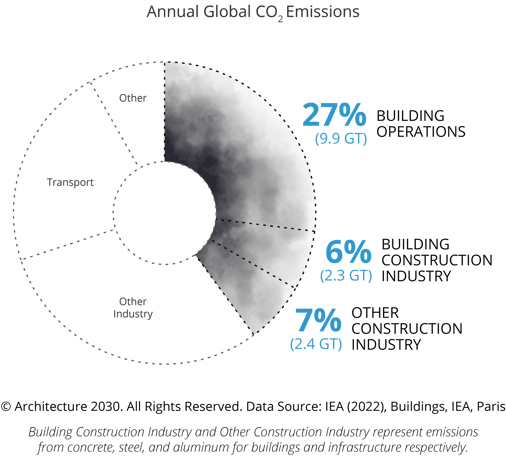
Navigating the Impact of Climate Change on New Construction
On Monday, July 3, 2023, planet Earth experienced the hottest average global temperature in recorded history, according to two climate tracking agencies. On Tuesday, it climbed even further, reaching 17.18 degrees Celsius (62.92 degrees Fahrenheit), and the global temperature remained at this record-high on Wednesday. Some scientists estimate that this record is the warmest in at least 100,000 years.
Climate change has and will continue to have a significant impact on new construction. As global temperatures rise, and weather patterns become more unpredictable, new construction projects face numerous challenges and considerations related to climate change.
Building Design and Materials
Climate change will affect the design and materials used in new construction projects. For example, increased temperatures may require buildings to be designed with better insulation and shading to reduce the need for air conditioning, while buildings in areas prone to extreme weather events such as hurricanes will require more robust construction methods and materials to withstand higher wind loads.
Flood Risks
Climate change has led to more frequent and severe flooding events in many parts of the world. Designers will have to consider flood risks and may need to incorporate flood-resistant features, such as elevated foundations, flood barriers, and stormwater management systems to mitigate potential damage from flooding.
Water Availability
Wildly fluctuating temperatures and unusual precipitation patterns have affected water availability in certain regions, with some areas experiencing water scarcity and others facing increased rainfall and flooding. Water-efficient design and technologies, such as rainwater harvesting, greywater recycling, and low-flow fixtures to optimize water use and reduce the strain on local water resources will be a key component in buildings of the future.
Energy Efficiency
According to Architecture2030, the built environment generates 40% of annual global CO2 emissions. Achieving zero emissions from new construction will require energy-efficient buildings that use no on-site fossil fuels to operate and are 100% powered by on- and/or off-site renewable energy.
Existing buildings could be required to prioritize energy-efficient design and technologies, such as solar panels, LED lighting, and high-performance insulation to reduce their carbon footprint and comply with stricter energy codes and regulations.
Resilience and Adaptability
The frequency and intensity of extreme weather events, such as storms, wildfires, and heat waves, is expected to increase. In addition, intense storms can damage property, cause loss of life and population displacement, and temporarily disrupt essential services such as transportation, telecommunications, energy, and water supplies. To withstand and recover from such events, future construction projects will incorporate resilience and adaptability features, such as reinforced roofs, fire-resistant materials, and passive cooling strategies.
Climate change is already influencing how new construction projects are planned, designed, and built, and it will continue to be a critical consideration in the future. Adapting to the impacts of climate change in new construction is essential to ensure the resilience, sustainability, and long-term success of buildings in a changing climate.
Read more about making carbon informed decisions in the March 2023 issue of CAM Magazine.
Recent Posts
-
Recruiting & Retaining Employees
Member Benefit
-
CAM NewsBriefs – December 15, 2025
eNews
-
CAM Magazine's December 2025 Issue Is Ready to View
CAM Magazine
-
CAM NewsBriefs – November 26, 2025
eNews
-
CAM NewsBriefs – November 14, 2025
eNews
-
CAM Magazine's November 2025 Issue Is Ready to View
CAM Magazine


